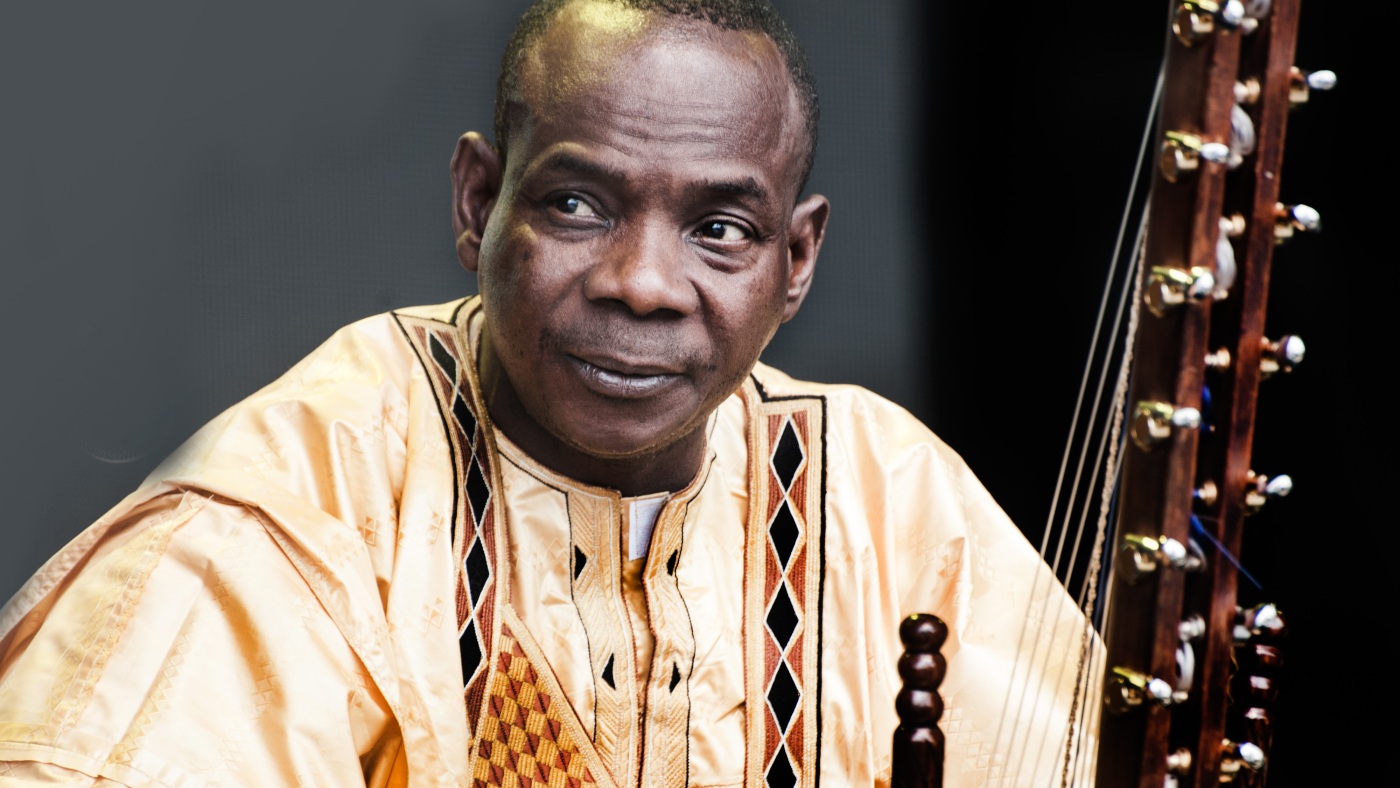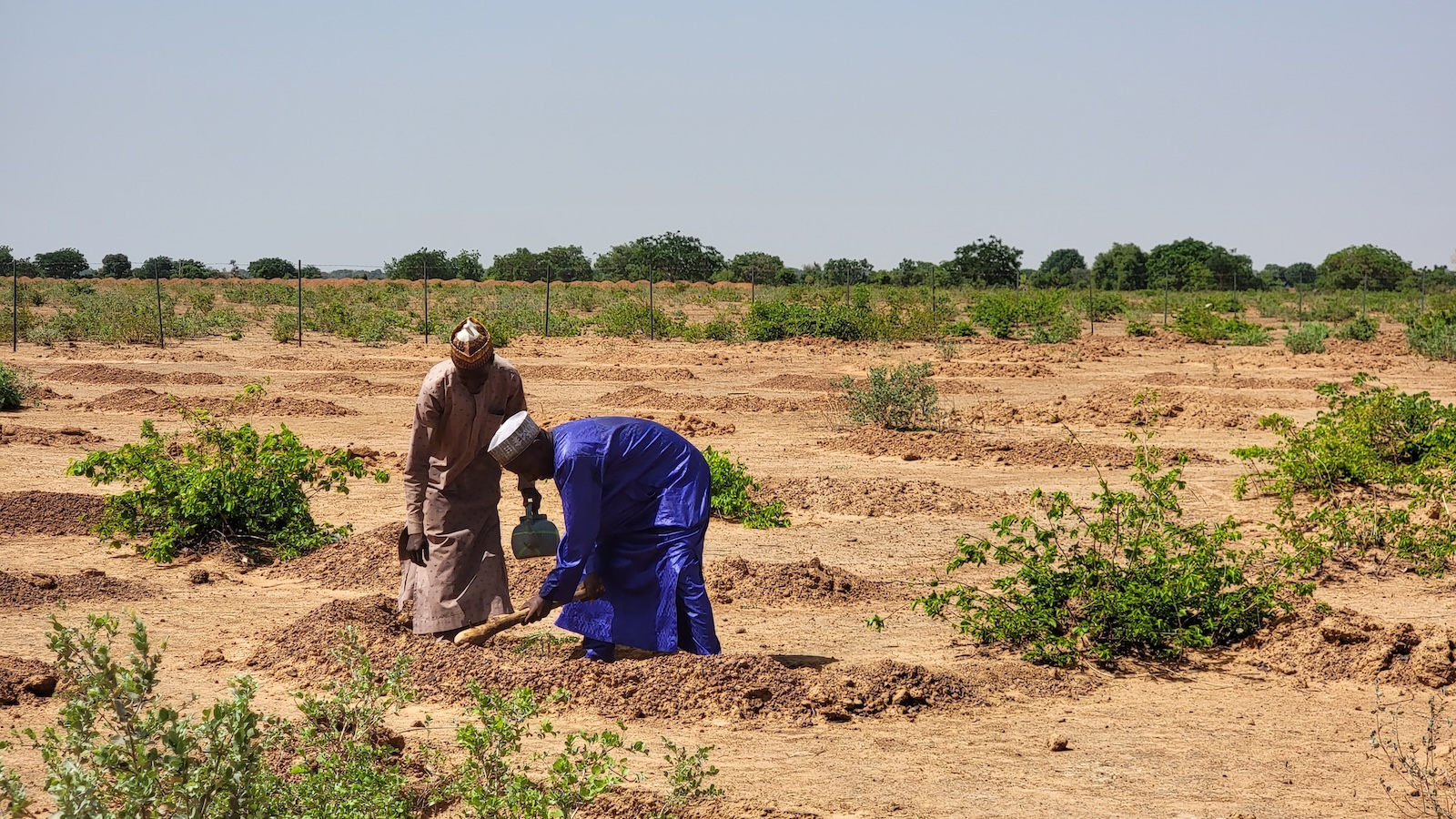World
Toumani Diabaté plucked the kora’s 21 strings. The world fell in love with his music

Musician Toumani Diabaté of Mali and his 21-string kora, photographed at WOMAD — the World of Music, Arts and Dance festival held yearly in the United Kingdom. Diabaté died on July 19 at age 58.
Judith Burrows/Getty Images/Hulton Archive
hide caption
toggle caption
Judith Burrows/Getty Images/Hulton Archive
“He played those 21 strings with love.”
That’s the great American banjo player Bela Fleck talking about his duets with Toumani Diabaté of Mali — including the crowd-pleaser “Dueling Banjos.”
Fleck called him “one of the greatest accompanists I’ve ever played with.”
It’s one of many heartfelt tributes to Diabaté, who died of kidney failure on July. Diabaté was 58.
His death reverberated throughout the world, with many musicians expressing how profoundly his life had impacted them.
“Toumani was a guardian of our culture, but also a bold innovator who never stopped pushing the boundaries of his craft,” Malian singer Oumou Sangaré wrote on her Instagram page. “His departure leaves an immense void in our hearts, but his musical legacy will continue to resonate within us and inspire generations to come.”
Like father and mother….
Toumani Diabaté was born into a centuries-old family of griot musicians, who have preserved the stories and traditions of Mali’s Mandé empire, once the largest in West Africa, through their music. His father, Sidiki Diabaté, was the premier kora player in the years following Mali’s 1960 independence from France, and his mother, Nene Koita, was an accomplished singer.
Diabaté, who had always been expected to carry on his family’s longstanding musical legacy, taught himself to play his father’s instrument.
His technique was vividly showcased in his innovative solo albums, Kaira (1988) and The Mandé Variations (2008). On Kaira — which was released shortly after he turned 21 — his graceful shifts between melody and bassalways sounded like he was singing as much as playing.
Diabaté also created a more expansive project called Symmetric Orchestra. This large ensemble brought together instruments and repertoires from across the former Mande Empire with added textures and punch from American and European strings and horns. Diabaté included original compositions alongside new adaptations of griot songs.
As Diabaté wrote in the liner notes of the orchestra’s 2006 album, Boulevard De L’Independance, “One of the philosophies of Symmetric is the encounter of generations. The old generation has its experience in music, the new generation has its madness in music.”
Diabaté’s enthusiasm for improvisation and sharing kora music throughout the world led to several successful collaborations. He recorded with legendary Malian guitarist Ali Farka Touré and another great kora player, Ballake Sissoko. Diabaté also worked with artists whose backgrounds were different from his own. These collaborations included jazz and blues musicians, Spanish flamenco groups and the London Symphony Orchestra.
Taj Mahal: ‘It was like 500 years of separation no longer existed’
Through his music, he promoted his own heritage while also helping to show how much that culture was part of a shared language. Blues guitarist Taj Mahal and Diabaté teamed up for the 1999 album Kulanjan along with a small group of Malian musicians. The album features a rich blend of American acoustic folk and blues along with Malian musical styles. Mahal’s gruff voice creates a compelling contrast with the higher registers of the Malian instrumentalists and singers. Despite their seemingly different styles, Mahal found a mutual musical understanding in their collaboration.
“It was never like, ‘You play this, I’ll play that.’ We just played together, looked at each other and it was done. Just like that. It was like 500 years of separation no longer existed,” Mahal said.
Béla Fleck collaborated with Diabaté for a series of concerts in 2009. Some of the performances are included on their album, The Ripple Effect, which was released in 2020. A sense of joy comes through their quickly shifting tempos and shared sense of humor, evident in moments like Diabaté’s playful musical response to Fleck’s snippet of “Oh, Susannah” on the track “Kauonding Sissoko.”
“Toumani was incredibly sweet from the start. He always called me ‘my brother,’ which made me feel very privileged,” said Fleck. “Toumani had elegance. That’s the thing I think about, and that amazing touch of his.”
‘A great artist who belongs to the world’
Iranian kamancheh player Kayhan Kalhor was one of Diabaté’s most recent collaborators, with their duo album, The Sky Is The Same Colour Everywhere, released last year. Their pairing began with an invitation to perform together at the Morgenland Festival in Osnabrük, Germany, where they met just hours before their first concert. The album was recorded after a brief European tour, but their musical interplay suggested a much longer partnership.
“We came two different cultures that see music in the same way. Improvisation being one of the major aspects. The other aspect is that our musical cultures go way back,” Kalhor says. “When you’re that deep in the culture and know the music of that culture really well, it gives you the freedom and the vision to add to it. So it’s not surprising that a musician of Toumani’s caliber and stature adds something to the music that the younger generation uses.”
Kalhor added that while Diabaté is a part of Mande culture, ultimately his music connects with everyone.
“Vincent Van Gogh, Paul Cézanne, Akira Kurosawa and Abbas Kiarostami are great artists who belong to the world,” Kalhor said. “So I don’t see Toumani as a kora player from Mali, I see him as a great artist who belongs to the world.”
Aaron Cohen is the author of Move On Up: Chicago Soul Music and Black Cultural Power (University of Chicago Press) and Amazing Grace (Bloomsbury). He teaches humanities and English composition at City Colleges of Chicago and regularly writes about the arts for such publications as the Chicago Tribune, Chicago Reader and DownBeat.









